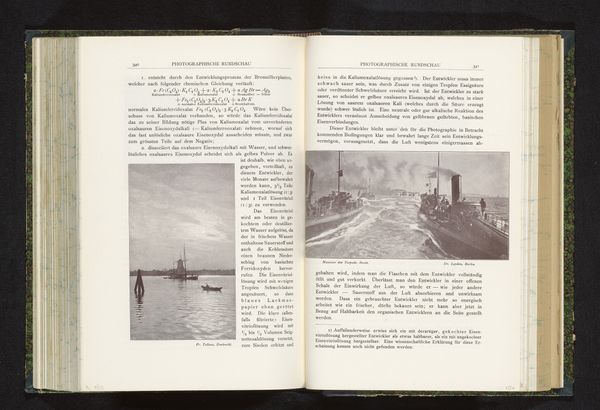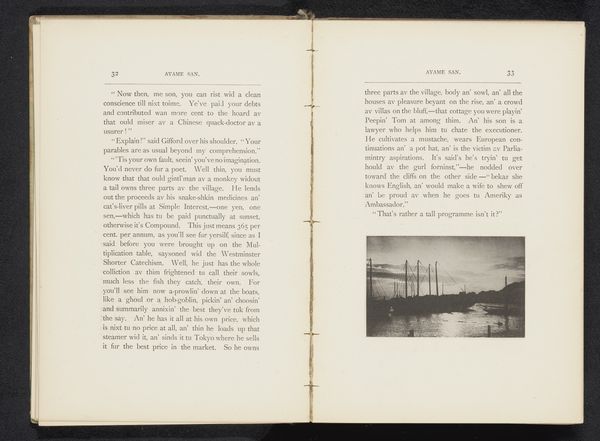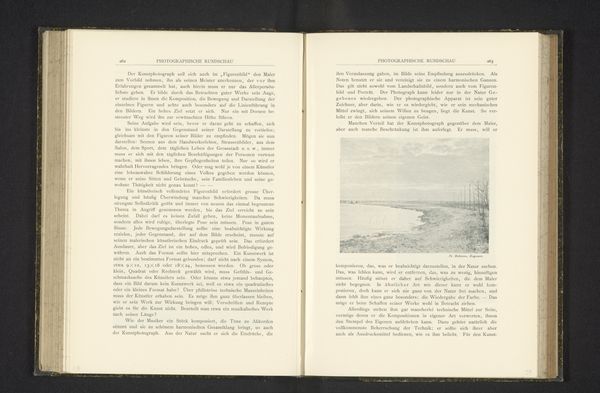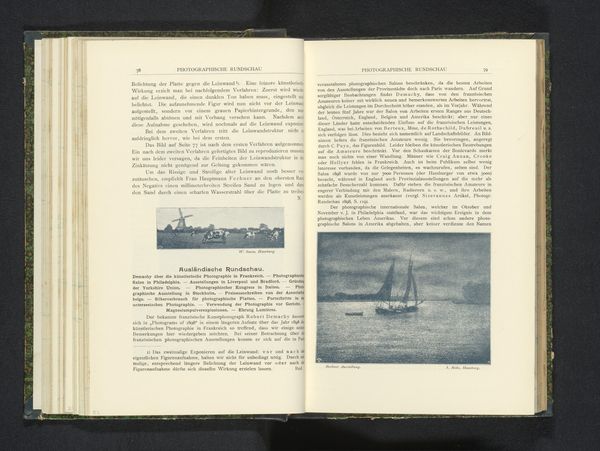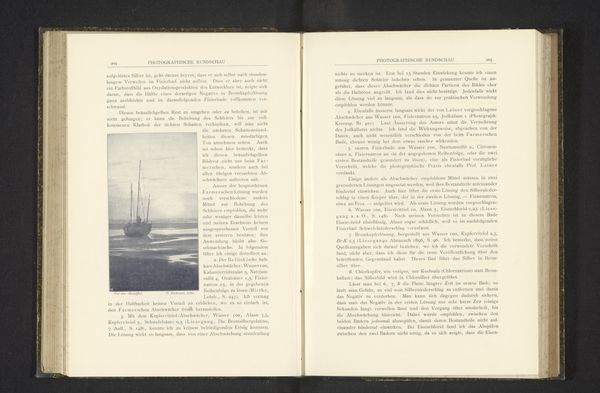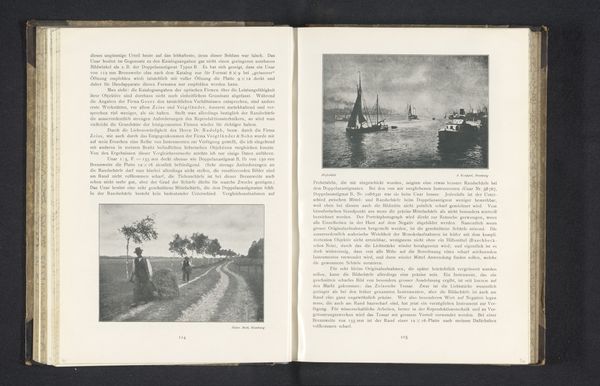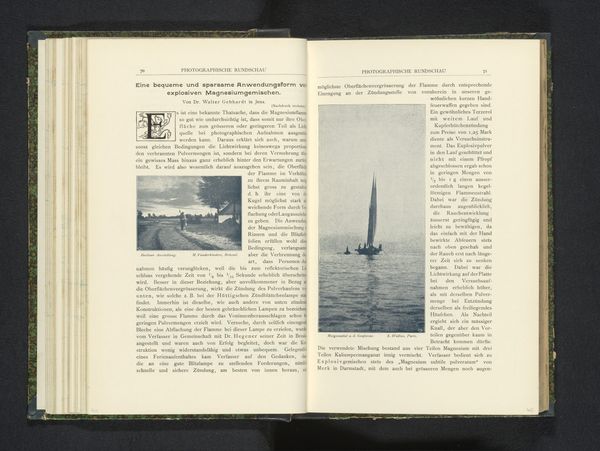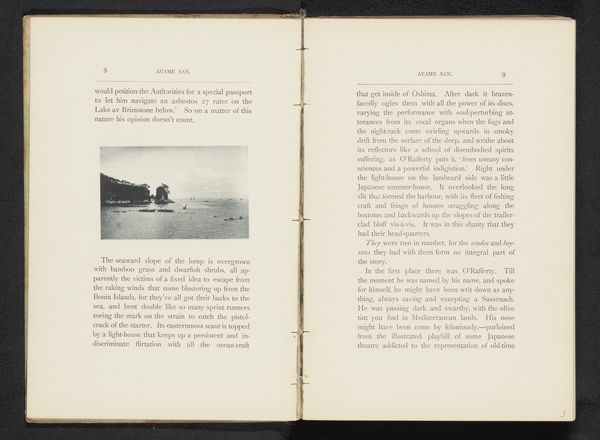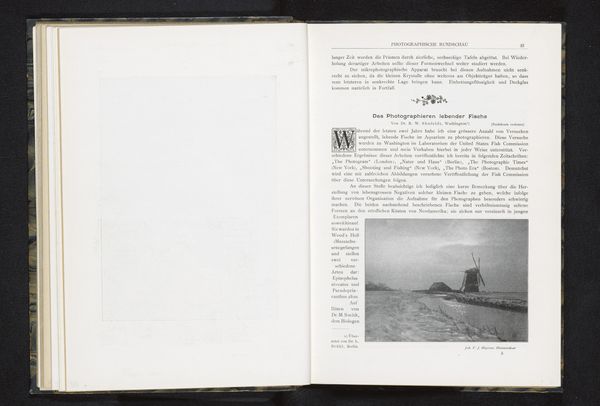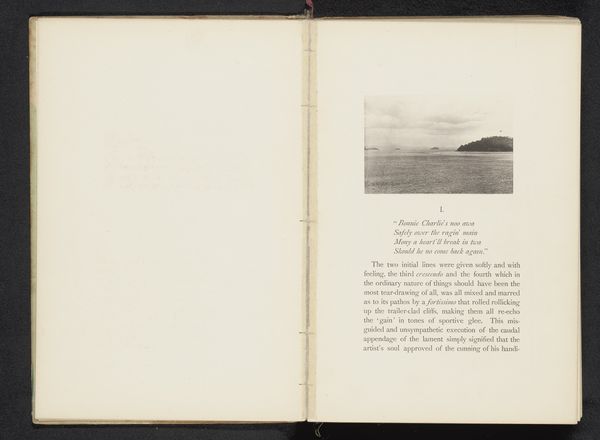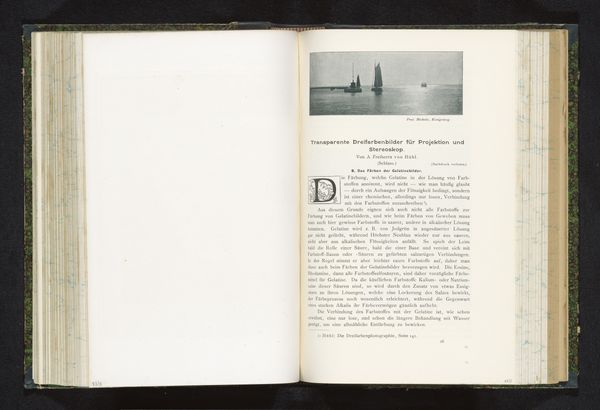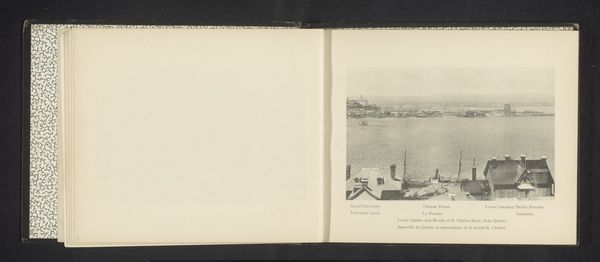
Gezicht op een waterweg, met op de achtergrond een kerktoren before 1901
0:00
0:00
print, photography, gelatin-silver-print
# print
#
landscape
#
photography
#
gelatin-silver-print
#
realism
Dimensions: height 113 mm, width 147 mm
Copyright: Rijks Museum: Open Domain
Curator: This page comes from a pre-1901 issue of “Photographische Rundschau”, showcasing a gelatin silver print by George Edward Hackford titled "Gezicht op een waterweg, met op de achtergrond een kerktoren"—"View of a Waterway, with a Church Tower in the Background." The subject is simple, almost elemental. What strikes you most when you first see it? Editor: The sepia tone, without question. It imbues everything with such stillness, a sort of melancholic nostalgia. It feels more like a dream than a landscape. There's also this soft haze, particularly around the church tower; it softens the reality of the structure itself. Curator: The haze is likely due to the photographic process itself, characteristic of early gelatin silver prints, often revealing the constraints and capabilities of the medium itself. Hackford wasn’t just pointing a camera; he was deeply involved in the technical alchemy. And prints like this existed in multiple reproduced copies, making photography much more democratic. Editor: Precisely. Thinking about "democracy," I like to imagine who would have held this very page, contemplating that church tower across the water a century ago, trying to glimpse whatever peace the photographer was chasing, which resonates even today. There’s something fundamentally hopeful here. Curator: The act of disseminating images democratically is definitely part of photography's appeal, and that appeal intersects with photographic landscape’s accessibility in terms of subject. The gelatin-silver print would have made this artwork affordable. Its landscape aesthetic, and emphasis on atmospheric effect would appeal to bourgeois tastes for rural scenes and nature. Editor: So, it was about reaching the wider society through aesthetic subjects they recognize in ways which new media made it more available? I wonder what Hackford was imagining capturing the very minute when snapping. Maybe to him the church tower was his Eiffel Tower. A marker. A claim. I am making history right now, through images... Curator: Perhaps, but remember the role publications had as spaces for distributing not just Hackford's landscape prints, but photography more widely as an artistic and technical form! These printed photogravures offer an intimate view of photography entering mass culture, too. Editor: A lovely meeting of perspectives, don't you think? High art or a humble print; its emotional punch and impact, really, doesn't depend on the context where we come across. Curator: I appreciate you reminding me of the image’s inherent power, it can be easy to get lost in the technical aspects sometimes.
Comments
No comments
Be the first to comment and join the conversation on the ultimate creative platform.
